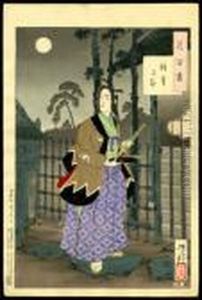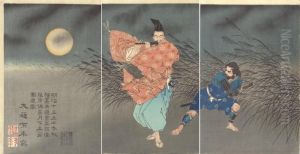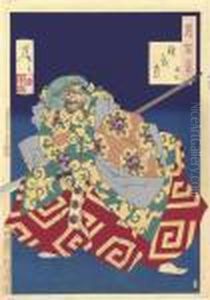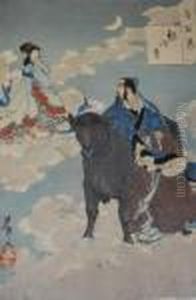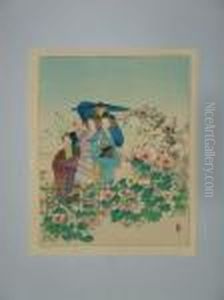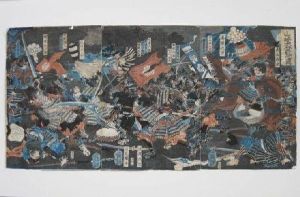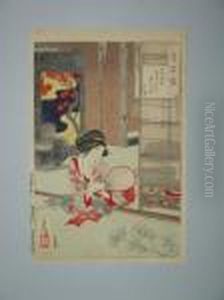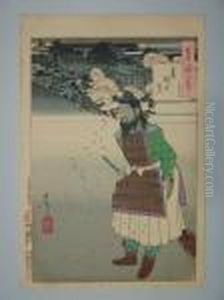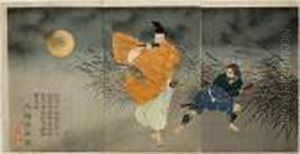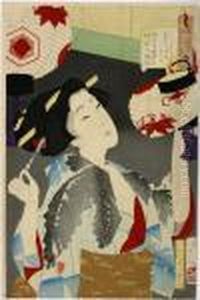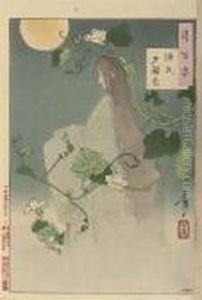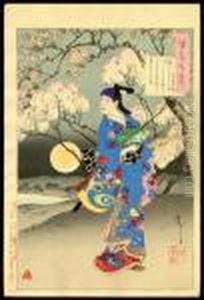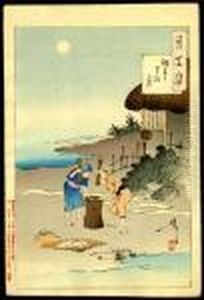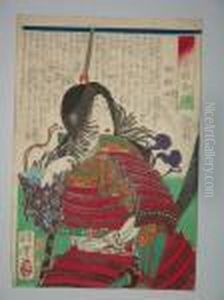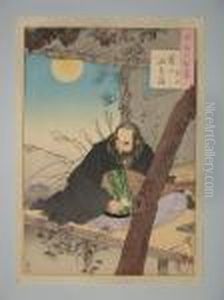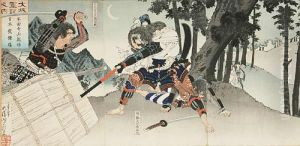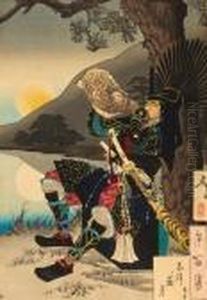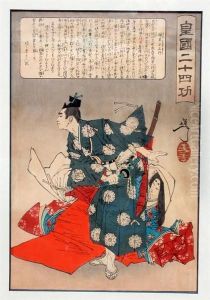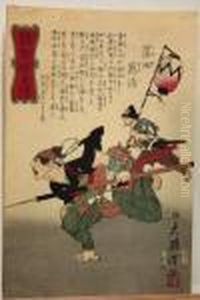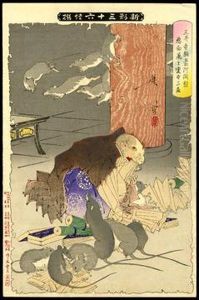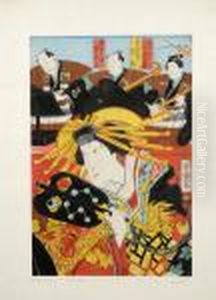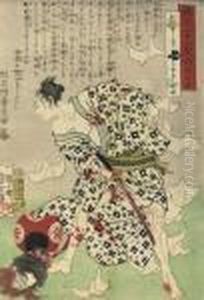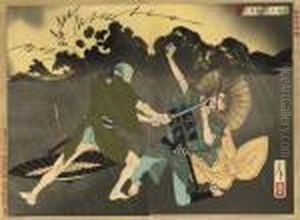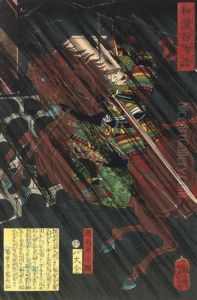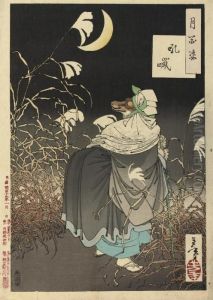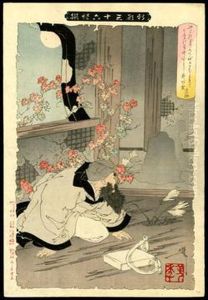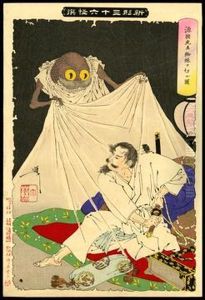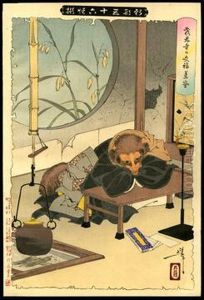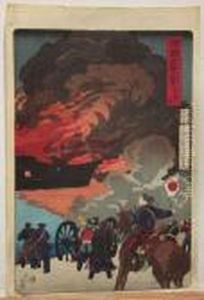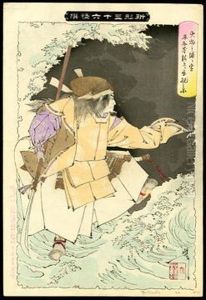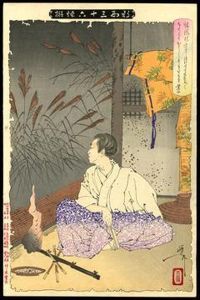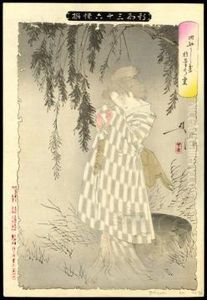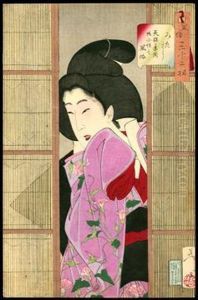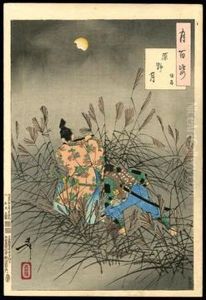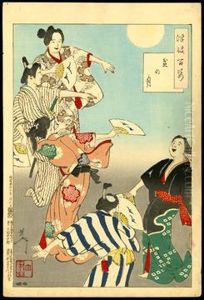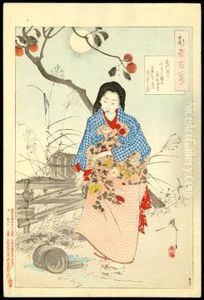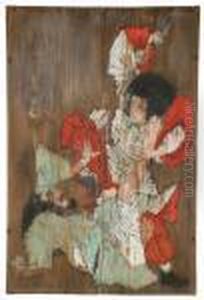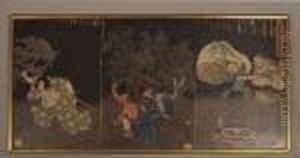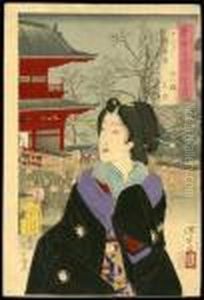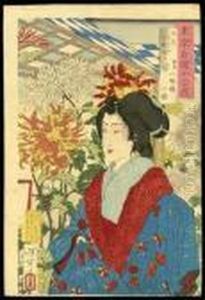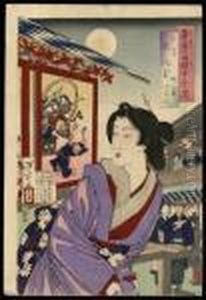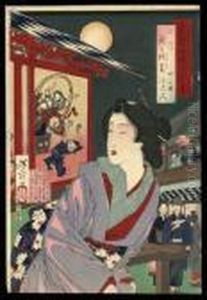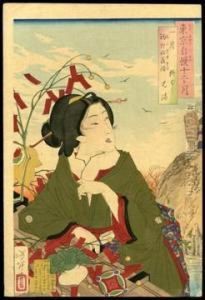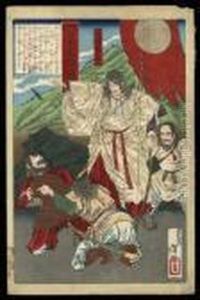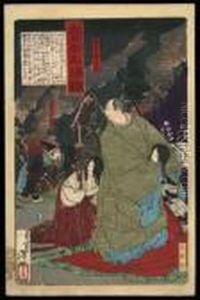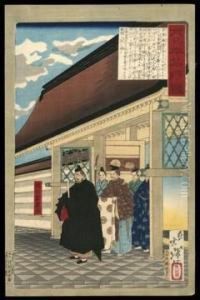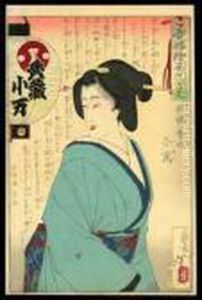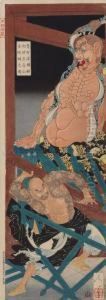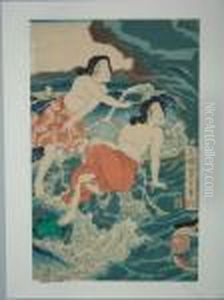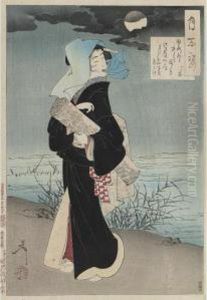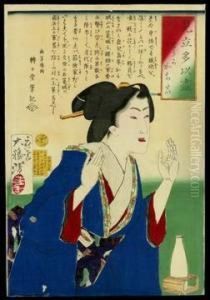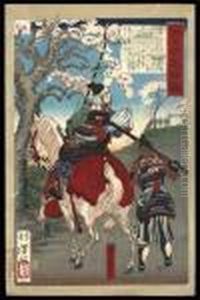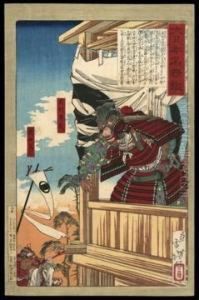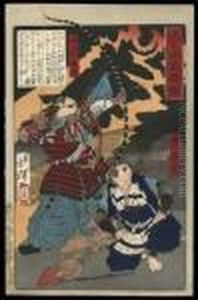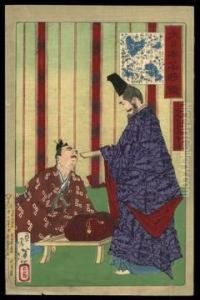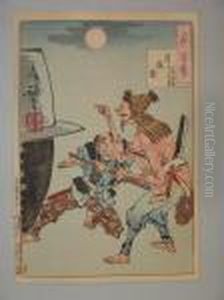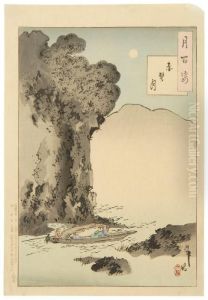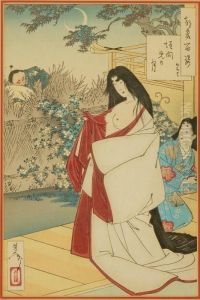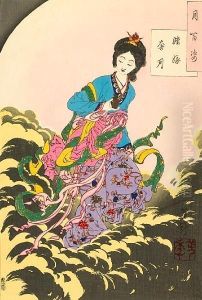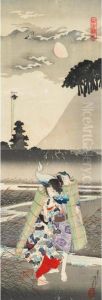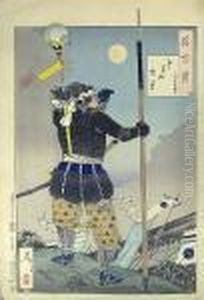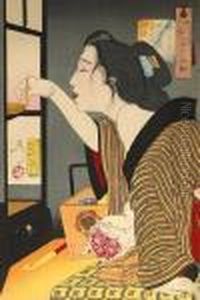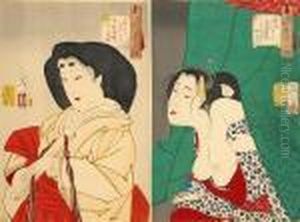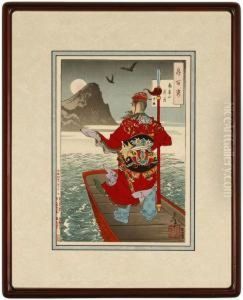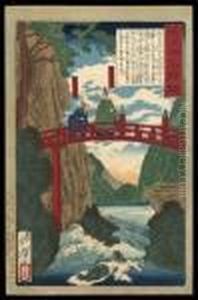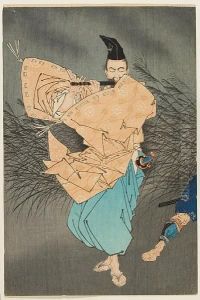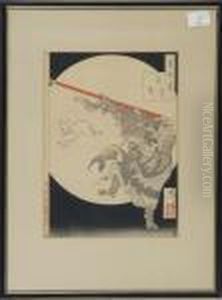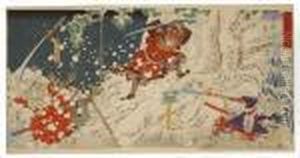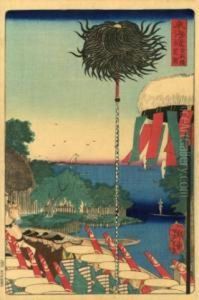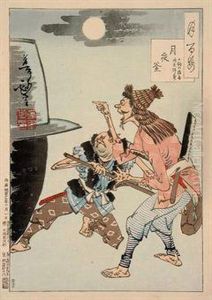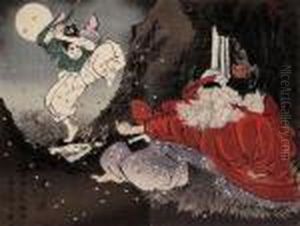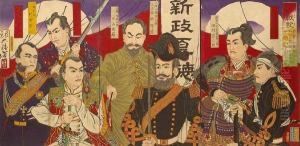Tsukioka Kinzaburo Yoshitoshi Paintings
Tsukioka Kinzaburo Yoshitoshi, also known as Yoshitoshi, was a Japanese artist widely recognized as the last great master of the ukiyo-e genre of woodblock printing and painting. Born in Edo (now Tokyo), Japan, in 1839, Yoshitoshi witnessed the transition of Japan from its traditional feudal society to a modernized one during the Meiji Restoration.
Yoshitoshi's career began in the late Edo period, a time when the ukiyo-e tradition was in decline as Japan opened to the West and modern forms of art began to emerge. Despite the waning popularity of ukiyo-e, Yoshitoshi pursued the art form with great passion and innovation. He became a pupil of Utagawa Kuniyoshi, one of the last great masters of the ukiyo-e style, at a young age. Under Kuniyoshi's guidance, Yoshitoshi developed his skills and began to establish his own style.
Throughout his life, Yoshitoshi struggled with mental illness and poverty, yet he was prolific and his works were characterized by their haunting beauty, vivid color, and intense emotion. He often depicted scenes from Japanese history, folklore, and ghost stories, as well as scenes of contemporary life and events. His series 'One Hundred Aspects of the Moon' from the 1880s, which combines elements of mythology, history, and folklore with the moon as a unifying theme, is considered one of his masterpieces.
Yoshitoshi's work is known for its expressive line work and innovative use of color. He incorporated Western techniques and perspectives into his compositions, which helped to revitalize the traditional ukiyo-e art form. His prints often conveyed a sense of violence and psychological depth that was new to the genre, reflecting the social upheaval and modernization of the Meiji period.
Sadly, Yoshitoshi's life was marked by bouts of mental instability, and he died in 1892 at the relatively young age of 53. Despite his struggles, he left a lasting legacy. He is remembered for his artistic brilliance and his role in bridging the Edo and Meiji periods in Japanese art. Today, Yoshitoshi is celebrated as one of the most influential figures in Japanese art history, and his works are held in high regard by collectors and museums around the world.
